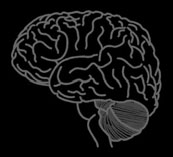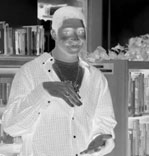four students to one computer, then you will need
The ideal use of the Web site requires one com-
to change the way you teach the module from the
puter for each student team. However, if you have
instructions in the lessons. For example, if you
only one computer available in the classroom, you
have only one computer available, you may want
can still use the Web site (for example, by using a
students to complete the Web-based work over an
suitable device for projecting the screen image, or
extended time period. You can do this in several
by rotating student teams through the computer
ways. The most practical way is to use your com-
station). If you do not have the facilities for using
puter as a center along with several other centers
the Web site with your students, the print-based
at which students complete other activities. In this
alternatives are provided for those lessons.
approach, students rotate through the computer
center, eventually completing the Web-based
Collaborative Groups
work that you have assigned.
Many of the activities in the lessons are designed
to be completed by teams of students working
A second way to structure the lessons if you have
together. Although individual students working
only one computer available is to use a projection
alone can complete these activities, this strategy
system to display the desktop screen for the whole
will not stimulate the types of student-student
class to view. Giving selected students in the class
interactions that are part of active, collaborative,
the opportunity to manipulate the Web activities
inquiry-based learning. Therefore, we recommend
in response to suggestions from the class can give
that you organize collaborative teams of two to
students some of the same autonomy in their
four students each, depending on the number of
learning they would have gained from working in
computers available. Students in groups larger
small teams.
22



Web Activities for Students
If you use assistive technology (such as a Braille
with Disabilities
reader or a screen reader) and the format of any
The Office of Science Education (OSE) is com-
material on our Web sites interferes with your
mitted to providing access to the Curriculum
ability to access the information, please let us
Supplement Series for individuals with disabili-
know. To enable us to respond in a manner most
ties, including members of the public and federal
helpful to you, please indicate the nature of your
employees. To meet this commitment, we will
accessibility problem, the format in which you
comply with the requirements of Section 508 of
would prefer to receive the material, the Web
the Rehabilitation Act. Section 508 requires that
address of the requested material, and your con-
individuals with disabilities who are members of
tact information.
the public seeking these materials will have
Contact us at
access to and use of information and data that
Office of Science Education
are comparable to those provided to members of
National Institutes of Health
the public who are not individuals with disabili-
6705 Rockledge Drive, Suite 700 MSC 7984
ties. The online versions of this series have been
Bethesda, MD 20892-7984
prepared to comply with Section 508.
ose@science.education.nih.gov
How Your Brain Understands What Your Ear Hears 508-Compliant Web Activities Lesson,
For students with hearing impairment
For students with sight impairment
activity
Lesson 1, Activity 1:
Students may click on the closed-cap-
There is a text description within the
What Did You Say?
tioning icon to view the captioning for
activity that is read by screen readers.
Tracks 1–6.
It describes the format of the activity
and indicates what software is
required for optimal performance.
The closed-captioning icon is located
Tracks 1–6 are accessible via the
in the top left corner of the activity,
keyboard. When using a screen
within the rounded gray rectangle.
reader, Track 4 includes a descriptive
The text appears below the track list-
narration.
ing and animation.
Lesson 3, Activity 2:
Students may click on the closed-cap-
There is a text description within the
Pitch Me a Curve
tioning icon to view the captioning
activity that is read by screen readers.
for the Introduction and Filtered
It describes the format of the activity
Sound sections.
and indicates what software is
required for optimal performance.
The Introduction screen includes a
text description of the oscilloscope
The closed-captioning icon is
tracings.
located in the top left corner of the
activity, within the rounded gray
When using a screen reader, the
rectangle. The text appears below
hearing-response graph begins with
the animation.
an audio description and instructions
for the activity. Students may navigate
between pitches with the Tab key
23
Using the Web Site

How Your Brain Understands What Your Ear Hears
Throughout the activity, an oscillo-
and increase/decrease the loudness
scope provides a visual representa-
with the +/– keys.
tion of the sounds that occur.
When using a screen reader, the Fil-
tered Sound section begins with an
audio description and instructions for
the activity. The audio describes the
differences between each track. Stu-
dents may navigate to the three track
buttons using the Tab key.
Supervision is recommended.
Lesson 4, Activity 1:
Introduction, Animation, Sequencing
There is a text description within the
The Mysterious
Activity
activity that is read by screen readers. It
Black Box
describes the different sections of the
Students may click on the closed-cap-
activity and indicates what software is
tioning icon to view the captioning
required for optimal performance.
for the Introduction and Animation
sections. The final animation at the
When using a screen reader, the Intro-
end of the Sequencing Activity also
duction includes a descriptive narra-
has captioning available.
tion that explains the animation. A
second descriptive narration explains
the Black Box Animation.
When using a screen reader, students
The icon is located in the top left cor-
will encounter an accessible version
ner of the activity, within the rounded
of the Sequencing Activity. This
gray rectangle. The text appears
includes text instructions and audio
below the animations.
feedback during the game. Students
are instructed to complete the
sequence by putting the components
of the hearing pathway in their correct
order. Once they have placed the
components in order, they can review
and test the sequence.
Once the Sequencing Activity has
been completed successfully, students
move on to the final animation. A
descriptive narration explains the ani-
mation of the hearing pathway.
Supervision is recommended.
Lesson 5, Activity 1:
No special considerations are
An equivalent description of the
How Small Is a
required.
video has been provided. It is
Hair Cell?
located directly beneath the video
and is accessible via a screen reader.
24



Information about
Hearing, Communication,
and Understanding
Figure 1. Sounds may be classified as environmental, voiced, or musical.
1 Introduction
• A recent study showed that men who hunt ex-
Sound offers us a powerful means of communica-
perience an increased risk of high-pitched hear-
tion. Our sense of hearing enables us to experience
ing loss of 7 percent for every five years that
the world around us through sound. Because our
they hunt? Nearly all (95 percent) of these same
sense of hearing allows us to gather, process, and
hunters report that they do not use hearing pro-
interpret sounds continuously and without con-
tection while hunting.11
scious effort, we may take this special sense of
Contemporary hearing research is guided by les-
communication for granted. But, did you know
sons learned from sensory research, namely that
that
specialized nerve cells respond to different forms
• Human communication is multisensory, involv-
of energy—mechanical, chemical, or electromag-
ing visual, tactile, and sound cues?
netic—and convert this energy into electrochemi-
• The range of human hearing, from just audible
cal impulses that can be processed by the brain.
to painful, is over 100-trillion-fold?
• Tiny specialized cells in the inner ear, known as
The brain then works as the central processor of
hair cells, are responsible for converting the
sensory impulses. It perceives and interprets them
vibrational waves of sound into electrical signals
using a “computational” approach that involves
that can be interpreted by the brain?
several regions of the brain interacting all at once.
• Tinnitus, commonly known as “ringing in the
This notion is different from the long-held view
ears,” is actually a problem that originates in the
that the brain processes information one step at a
brain?
time in a single brain region. Over the past decade,
25
How Your Brain Understands What Your Ear Hears
scientists have begun to understand the intricate
Misconception 1: Our senses provide a complete
mechanisms that enable the ear to convert the
and accurate picture of the world.
mechanical vibrations of sound to electrical
Younger students are often unaware of the limita-
energy, thereby allowing the brain to process and
tions of their senses. They may believe that what
interpret these signals.
they perceive is all that there is. Most students
would be quite surprised to learn that their ears
Scientific understanding of the role of genes in
produce measurable sounds of their own that are
hearing is also increasing at an impressive rate.
normally inaudible to the brain. Also, they might
The first gene associated with hearing was isolated
not be aware that some animals use sound fre-
in 1993. By the end of 2000, more than 60 genes
quencies that are out of our hearing range. For
related to hearing were identified.15 In addition,
example, whales communicate using low-fre-
scientists have pinpointed over 100 chromosomal
quency sounds that are inaudible to humans and
regions believed to harbor genes affecting the
can carry across vast expanses of ocean. This
hearing pathway. Many genes were first isolated in
module will make students aware that our senses
the mouse, and from this, the human genes were
react to only a limited range of the energy inputs
identified. Completion of the Mouse and Human
available. Much sensory information exists
Genome Projects is helping scientists isolate these
beyond our ability to experience it. Our level of
genes.
awareness is influenced by our individual abilities,
our genes, our environment, and our previous
The rapid growth in our understanding is of more
experiences, as well as the interactions among
than academic interest. In a practical sense, shar-
them. Learning about the limitations of our senses
ing this information with young people can
can help students interpret their environment
enable them to adopt a lifestyle that promotes the
more accurately.
long-term health of their sense of hearing. With
this in mind, this supplement will address several
key issues, including
Your ears produce sounds of their own
• What is the nature of sound?
that are normally inaudible to the brain.
• What mechanism allows us to process sounds
with great precision—from the softest whisper
Misconception 2: Our senses function
to the roar of a jet engine, from a high-pitched
independently of one another.
whistle to a low rumble?
Students may believe that because each sense is
• What are the roles of hearing, processing, and
specialized for a particular type of sensation,
speaking in human communication?
senses function by themselves and do not interact
• What happens when the hearing mechanism is
with one another or with the rest of the body.
altered or damaged? How does sound process-
Research, however, reveals many interactions
ing change?
between the senses.7 During this module, students
• What can be done to prevent or accommodate
will learn about the sensory integration that takes
damage to our sense of hearing?
place in the brain.
2 Misconceptions Related to Sensory
Misconception 3: As we age, our brain networks
Perception and Hearing
become fixed and cannot be changed.
In presenting the material contained within this
Scientific research has shown that the brain never
supplement, you may have to deal with students’
stops changing and adjusting to its environment.1
incomplete understanding about hearing. Some of
This ability is important for acquiring new knowl-
the likely misconceptions about hearing that stu-
edge and for compensating for deficiencies that
dents have follow:
result from age or injury. The ability of the brain
26




they will learn about simple, effective ways to
minimize harmful stimuli.
3 Major Concepts Related to
Hearing and Communication
Research into hearing and communication is pro-
viding a scientific foundation for understanding the
anatomy, physiology, and genetics of the hearing
pathway, as well as the social and cultural aspects of
human communication. The following discussion
is designed to introduce you to some major con-
cepts about hearing and communication.
Figure 2. Regardless of the senses used, under-
3.1 Communication is multisensory
standing occurs in the brain.
Although some people might define communica-
tion as an interaction between two or more living
to “reprogram” itself is called plasticity. Special
creatures, it involves much more than this. For
brain exercises, or training techniques, exploit
example, we are constantly receiving information
brain plasticity to help people cope with specific
from, and changing our relationship with, our
language and reading problems.
environment. This communication is received
Misconception 4: Our senses do not really
through our senses of smell, taste, touch, vision,
require any preventive maintenance.
and hearing. Communication with others makes
Students may believe that because our senses
use of vision (making eye contact or assessing
function without any conscious input, always
body language) and sound (using speech or
being “on,” their function and health are not
other sounds, such as laughing and crying).
influenced by what we do. The module will make
When a group of people shares a need or desire
students aware that the overall health of their
to communicate, language is born. The most
senses, like all other bodily systems, is affected by
common human language is the language of
the lifelong demands placed on them. Students
words. Words may be communicated in various
will learn about biological mechanisms in which
ways. Although they are usually spoken, they
potentially harmful input can lead to both short-
also may be written, fingerspelled, or expressed
term and long-term hearing impairments, and
through sign language.
Figure 3. Words may be communicated by writing, speaking, and signing.
27
Information about Hearing, Communication, and Understanding

How Your Brain Understands What Your Ear Hears
white-crowned sparrow usually begins singing its
Communication with others
full song between 100 and 200 days of age. Proper
makes use of sound and vision.
song acquisition is needed for mating and for
marking territory. However, to learn his song, the
young bird must be exposed to an adult bird’s
3.2 Language acquisition: imprinting
song consistently and frequently between one
and critical periods
week and two months after hatching (its critical
Since the time of Plato, there has been debate over
period for song acquisition). If the male sparrow
the nature of language. Some believe that lan-
hears the song only before or after its critical
guage is inborn and purposeful, while others
period, then he will not be able to learn the song
believe it to be artificial and arbitrary. Some con-
correctly.
sider language to be an evolutionary product,
while others do not. It appears that words are not
“built into” the brain, because language is a rela-
tively recent evolutionary development and also
because languages differ substantially from one
another. Language and communication are made
possible by specialized structures. We have
evolved a sophisticated apparatus for both speech
and hearing. Our brains have specific regions
devoted to speech, hearing, and language func-
tions. Still, the mechanisms by which children
acquire language are only partially understood.
Our brains have specific regions
devoted to speech, hearing,
and language functions.
Figure 4. Konrad Lorenz with young goslings that imprinted to him.
There are two concepts important to the acquisi-
tion of language. One is imprinting, which refers
These examples demonstrate the brain’s flexibil-
to the ability of some animals to learn rapidly at a
ity—its ability to be changed or to adapt to its
very early age and during a well-defined period in
environment. They demonstrate that an animal
their development. Imprinting generally refers to
may alter its behavior or acquire a behavior that
the ability of offspring to acquire the behaviors
helps improve its chances for survival. Do animals
characteristic of their parents. This process, once
have anything to teach us about our own acquisi-
it occurs, is not reversible. A famous example of
tion of language? The answer seems to be yes.
imprinting was described by Nobel laureate Kon-
Consider the following: Scientists have reported
rad Lorenz in the 1930s.5 Lorenz observed that
that seal pups learn to recognize their mothers’
newly hatched goslings would follow him, rather
voices within a few days of being born.2 This is
than the mother goose, if they saw him first. The
important because the mother seals must leave
period of imprintability may be very short, just
their pups after roughly a week to go hunting.
hours for some species.
Upon returning, mother seals vocalize and wait
A second concept, related to imprinting, is critical
for their pups to respond. By playing recordings of
periods. A nonhuman example of a critical period
various females, the investigators determined that
is the limited time frame within which a male bird
for the first few hours after birth, seal pups will
must acquire his song.8 For instance, a male
respond to the voice of any adult female. How-
28
ever, after two to five days, the pups learn to
module focuses on the key issues of how sound is
respond only to their mother’s voice.
processed so that communication is achieved.
Very soon after birth, human infants learn to dis-
3.3 Sound has a physical basis
tinguish speech sounds fr















